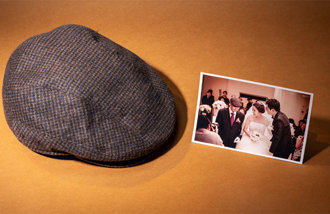Counterfeiter using mysterious serial number eludes capture
Counterfeiter using mysterious serial number eludes capture
Posted October. 31, 2012 03:48,
In the Hollywood movie Catch Me If You Can, the FBI expresses despair after its pursuit of Frank Abagnale Jr., who distributes fake checks across the U.S., goes cold. In 2005, Korean police and the National Forensic Service shouted en masse 77246 again!
About 4,775 units of the previous version of a fake 5,000-won banknote marked with that serial number were discovered across Korea the same year. The counterfeiting technique used was so sophisticated that the fake bills were not detected or reported in the course of circulation in the market or convenience stores.
Since the fabricated bills were detected only after they were deposited at financial institutions after being in wide circulation, police had no clue on the counterfeiter, including sex, age and whereabouts. The producer of the fake bills with the serial number 77246 that was discovered in 2004 remains unknown today, some eight years later.
All counterfeit banknotes had been coarse as they were made by printing paper in color on both sides. The ones with 77246 as the serial number were different, however, as they were almost impossible to catch with the naked eye.
At the time, the counterfeiter took advantage of a loophole used in the production of the old 5,000-won bill, a poor counterfeit-proofing technique that was applied. The previous bill, which had been printed from 1983, just had simple anti-counterfeit apparatuses such as the portrait of thinker Yulgok Yi Yi from the Joseon Dynasty and a taegeuk pattern that appeared when exposed to light.
The perpetrator used an inkjet printer to photocopy the face and back of the previous bill and inserted Yi Yis portrait in the color silver inbetween the printed papers to combine them. Since the portrait appeared when the fake bills were exposed to light, people had no reason to suspect if the bills were counterfeit.
For this reason, the fake bills were not reported to authorities while in circulation. They were reported only after they were deposited in financial institutions, where experts examined and reported the bills with the serial number 77246.
The number of these fake bills reported to authorities rapidly increased from 6,455 in 2006 to 6,461 in 2007 and 8,667 in 2008. A combined 5,825 of fake 10,000-won bills and 372 1,000-won bills were discovered in 2008, down more than 30 percent. But the number of counterfeits of the previous 5,000 won bill increased about 25 percent from the previous year.
Police, the National Intelligence Service, the National Forensic Service, the Bank of Korea and the Korea Minting and Security Printing Corp. have sought to catch the counterfeiter, but have no clues. The minting body analyzed ink and materials used in the counterfeit bills, while forensic authorities attempted a genetic analysis by using sweat left on the bills. Since the bills were handled by countless people, however, they have yet to find useful evidence.
As the previous 5,000-won bill is no longer used widely, authorities are unlikely to catch the counterfeiter. So the question of why he or she used the same serial number on the fake banknotes will likely go unanswered as well.
A source at the forensic service said, Since fake bills are scattered across the nation, it`s difficult to even estimate how many have been circulated, adding, If fake bills in market circulation are added, the prevalence and number of such fakes will get much larger.
The forensic service said all of the fake bills with the serial number 77246 were made by the same perpetrator. Authorities are also on high alert over if he or she will seek to counterfeit newer bills.
A police source said, Anyone who is suspicious about a bill being fake should report it to police immediately and try not to touch it, adding, No counterfeits of newer banknotes that bear the mysterious serial number have been reported yet.
dong@donga.com







